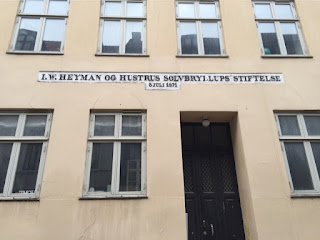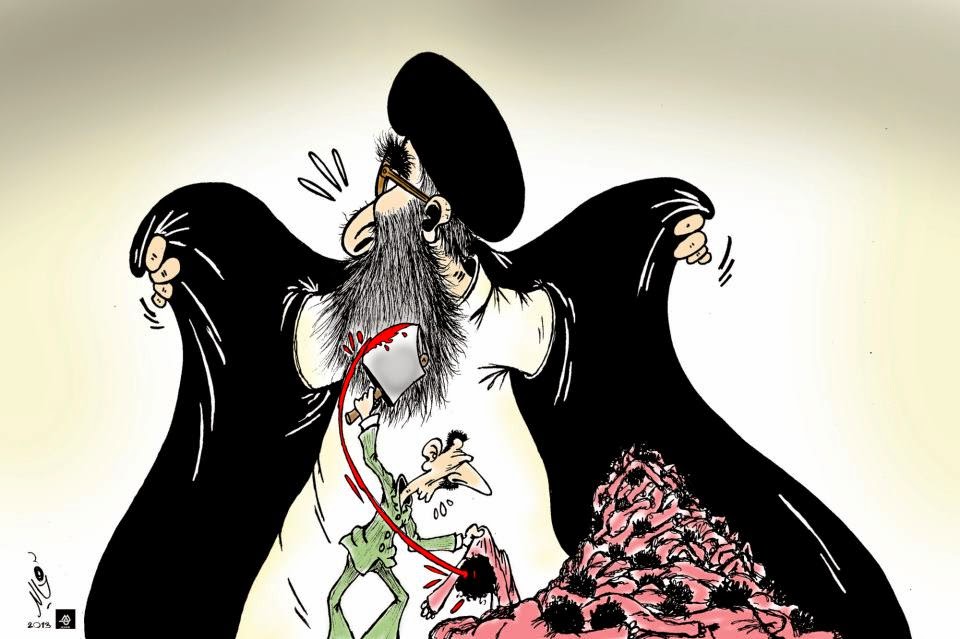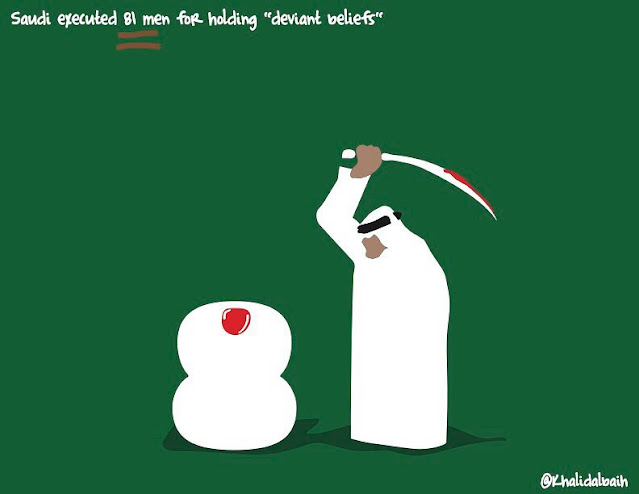The Personification of the WHY
Pages for a new History of Political Cartooning in Denmark
 |
| The text reads: "The Silver Wedding Foundation of I.W. Heyman and Wife; July 5, 1871" Photo: Erik Petri, March 4, 2016. |
As it happens, Erik and I are rewriting the history of Danish cartoon art.
 |
| Introducing I.W. Heyman: Peter Klæstrup for Pjerrot May 21, 1865. |
 |
| Søren Kierkegaard as drawn by Peter Klæstrup for Corsaren, No. 278, January 16, 1846. |
First and foremost it is about time a truism was dissolved following Søren Kierkegaard as drawn by Peter Klæstrup in Corsaren 1846 on the uneven length of the philosopher's trousers. Kierkegaard was made a figure of public ridicule, leading to the religious phase of his writing and his withdrawing to a life in near isolation.
Once his diaries were published after his death in 1855, it was known how deeply the drawn mockery had affected him and - so the truism goes: Consequently the Danish cartoonists changed their course of interest from then on. We have no tradition of caricature, nor do the cartoonists attack those they draw on a personal level. Kierkegaard was the turning point.
Only the Kierkegaard cartoons changed nothing, as it turned out. The cartoonists kept doing what they had been doing all along.
Which is a sentence with many layers to it and let us open to the most obvious of them. A case of a Copenhagener ridiculed in the satirical weekly written by students: Pjerrot in 1865 until he chose to answer back in his own way.
 |
| Peter Klæstrup, Pjerrot, March 12, 1865. |
His name was Isaac Wulff Heyman (1818-1884) business manager and stockbroker, philantropist to boot and with a number of honorary titles to his person. In 1865 he was awarded Ridderkorset (A Knight's Cross - albeit with no formal knighthood attached to it), which proved the occasion for Pjerrot to focus on him.
In the cartoon above Pjerrot is on the right taking on the role as "Fire Lieutenant" congratulating Heyman's father on his latest fire. Heyman père owned a substantial number of buildings in Copenhagen and as per usual at this time they were in the most appalling condition. One such school had just burned down due to the state of it. No children were harmed, but it brought the attention to the reason why it had burned down so easily. In fact he was receiving considerable amounts of money from the assurance on a regular basis from his houses burning to the ground. He was thus a happily insured man.
 |
| Peter Klæstrup, Pjerrot, July 2, 1865. |
 |
| Peter Klæstrup, Pjerrot, 1865. |
The cartoons of him are in unison with the photographs we know of him. I.W. Heyman seems to have been a tall, squarish man with a long, softly rounded nose that sort of turned flat in the middle of it. The cartoons of him are definitely his very own features.
Well-defined as he was, he was then put in a dilemma of a purely fictional character. In each cartoon the poor man is struggling to understand, why he was awarded the cross. Klæstrup has given a clever twist to Heyman's undressing. Heyman is not portrayed as standing accused. He is eroding from within. On the brink of madness, as the text reads he contemplates the cross, he contemplates himself and he ends up inspecting the back of the mirror, since there must be more to than what meets the eye.
Heyman took to the streets, where he met his father asking him to solve that big WHY for him. Only his father never quenched anything, curiosity for otherwise, as the text reads with its constant allusion to his joy of fire assurances.
 |
| Peter Klæstrup, Pjerrot, 1865. Note the difference in how the two men are drawn. The one with his specific features and his father drawn as a type: The frantic human caught in the realm of satire. |
 |
| Pjerrot, August 8, 1865. |
 |
| The Somnambular speaking the truth in her sleep, such as the contents of the letter in the prime minister's hand. Peter Klæstrup, Folkets Nisse, No. 38, September 23, 1865. |
But just about then, in late summer 1865 it all stopped. Totally and completely and not a word nor drawing was made on Heyman again.
Erik and I have still not found evidence for the rumors hinted at by the next generation of cartoonists: That Heyman paid Pjerrot a good sum to put a full stop to its interest in him.
The rumors of being paid instantly struck back at the weekly and Pjerrot was closed down the following year, 1866. NEITHER party had certainly any interest in making any transactions be known, although the mere rumor of it made Pjerrot an immediate and outright loser in all aspects of the life of the weekly. It had lost all right to live.
It is more than likely that a transaction of some sort took place seeing the abrupt stop of Heyman being mentioned. Heyman wisely knew, what a lengthy abuse of his name could mean to him, seeing the iconography of "A Heyman" was next on the cards.
 |
| Peter Klæstrup, Folkets Nisse, No. 39, September 30, 1865. The king throwing honors to everyone lining the road while traveling in Jutland. |
There is much to be said for the fact that the weekly had already made the most of him, and yet its interest was not so much on his person as the fact that he was the receiving end of a royal distinction.
Heyman risked being the personification of the critique against royal priviledges at a time, when the king had just been imported from Germany. The country had waged a stupid war - according to the very same critics - against Germany the year before and when discussing the further steps on how to secure the democracy, royal honors smelled of privileges of old.
"Medals are hung on idiots" P.A. Heiberg had declared; the last intellectual to be deported by a feudal king (in 1799), which is a sentence any Danish child shouts to this day. Hjerne (brain) and stjerne (star) rhyme in Danish, why his satire proved too good to be forgotten. Why not take down "that old horse" on the square in front of the royal palace, as another satirical weekly Folkets Nisse wrote in that Heyman year 1865 and erect a new monument of a "horse", with a cartoon of all the honors in use in Scandinavia at the time:
 |
| Peter Klæstrup, Folkets Nisse, No. 43, October 28, 1865. |
All of the present cartoons address the consolidation of democracy, using a specific person to ask the WHO and WHY some get to define society. Just as Kierkegaard was exposed to a criticism, which could not be directed at the king before the constitution of 1849. Kierkegaard had after all written of his reluctance to see the masses gain power, making him the perfect object for ridiculing absolutism.
Peter Klæstrup was the cartoonist to draw most of them and certainly all of the present ones seen here. Erik and I shall return to Klæstrup in much greater detail; for now let us just note how the features of Heyman are never altered. It is as if his official portrait is engaging in a fight in the street and speaking of fights, let us close with a frantic Heyman of the summer 1865, so desperate that he attacks the lithographer Tegner (which incidentally means Cartoonist), who had already been awarded the honor, putting the word "scandalous" into Heyman's own mouth:
 |
| Peter Klæstrup, Pjerrot, 1865. |
Erik Petri and I are deeply grateful for the
collectors of cartoon art making it possible for us to research the sources of cartooning so
intensely.

